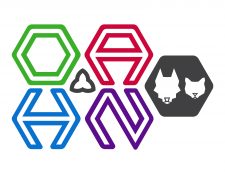OAHN Companion Animal Research Project: Update of Infection Prevention and Control Best Practices for Small Animal Veterinary Clinics

Project Lead: Dr. Maureen Anderson, OMAFRA
Collaborators: Dr. J. Scott Weese, Madison Wimmers
Date: January, 2020
Veterinary facilities face many of the same infection prevention and control challenges that human healthcare facilities encounter. Hospital-associated infections (HAIs) can have devastating effects on the health of veterinary patients, as well as the emotional and financial well-being of their owners. Outbreaks of HAIs can have a significant impact on patients, their owners and veterinary personnel. Additionally, the close contact between most people and their pets allows for transmission of infectious agents between humans and animals, in both directions, and many of the most important HAIs in human hospitals are now emerging in veterinary hospitals. Veterinary clinics can act as reservoirs of human and animal pathogens and play a role in dissemination of infectious agents including antimicrobial-resistant bacteria into the general population, with potential effects on human and animal health. Veterinary personnel also face an inherent risk of zoonotic diseases from contact with both healthy and ill animals. All these issues clearly indicate why infection prevention and control is an important part of veterinary practice. However, the field of veterinary infection control is still relatively underdeveloped compared to that of infection control in human healthcare, and limited resources are currently available to help veterinarians design and implement adequate infection control programs.
Purpose:
The purpose of this document is to provide veterinary personnel with a succinct guide to principles and practices of infection control relevant to small animal veterinary clinics. This document provides the basic information needed to develop an infection control program and establish basic infection control practices for such a clinic, with specific emphasis on critical routine practices such as hand hygiene, and cleaning and disinfection.
Scope of document:
This document pertains to infection prevention and control in small (companion) animal veterinary clinics and is relevant to all personnel who work in association with such clinics, including veterinarians, veterinary technicians and lay staff. For the purposes of this document, “veterinary personnel” refers to all personnel who work in a veterinary clinic. This includes non-clinical staff, as in many situations these individuals may still have periodic direct or indirect contact with patients and pathogens within a clinic.
To access these guidelines, click HERE or the image below:
To access the project impact data for this project, please click here: https://www.oahn.ca/wp-content/uploads/2021/04/Project-Impact-Data-OAHN-CA-IPC-202103.pdf


